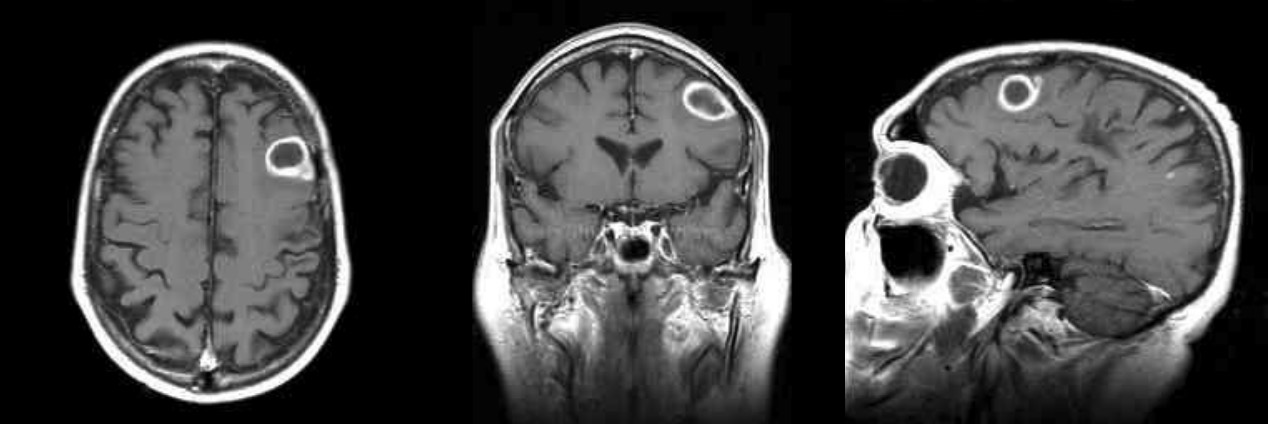Playlist
Show Playlist
Hide Playlist
Brain Abscess: Diagnosis
-
Slides BrainAbscess InfectiousDiseases.pdf
-
Reference List Infectious Diseases.pdf
-
Download Lecture Overview
00:01 So, obviously, imaging of the brain is needed and what we’re looking for is computed tomography, which will show you a hypodense center with surrounding ring enhancement. 00:15 And the MRI is actually more sensitive than the CT scan, especially for toxoplasmosis. 00:22 And if we have some spinal fluid, and sometimes it's not safe to get spinal fluid because of increased intracranial pressure, we would do PCR, looking for various causes. 00:35 Now, if we can safely aspirate the abscess, we will do so. 00:40 And if the Gram stain shows you mixed flora, we would design therapy according. 00:46 So, we would expect aerobic and anaerobic cultures to be done. 00:51 We would expect an acid-fast stain to be done. 00:54 We would do fungal stains. 00:56 In other words, a patient shouldn't have to undergo an invasive procedure without essentially getting everything known to man done on the specimen. 01:08 If they have a suspicion of Toxo, we can do the serology and a CSF PCR.
About the Lecture
The lecture Brain Abscess: Diagnosis by John Fisher, MD is from the course CNS Infection—Infectious Diseases.
Included Quiz Questions
Which of the following descriptions is most typical of brain abscess on a brain computed tomography scan?
- Hypodense center with surrounding ring enhancement
- Hyperdense center with surrounding ring enhancement
- Hypodense center with indiscreet boarders
- Hyperdense center with indiscreete boarders
- Diffuse edema without evidence of localized lesion
Which of the following tests is more sensitive in brain abscess?
- Magnetic resonance imaging
- Computed tomography scan
- Ultrasound
- Angiography
- X-ray
Customer reviews
5,0 of 5 stars
| 5 Stars |
|
5 |
| 4 Stars |
|
0 |
| 3 Stars |
|
0 |
| 2 Stars |
|
0 |
| 1 Star |
|
0 |




